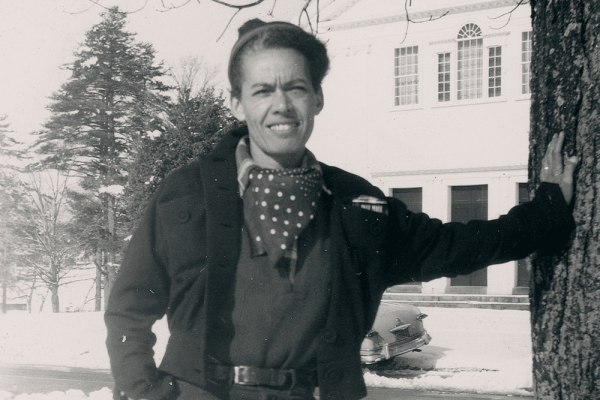After 20 years of war and violence under four different presidents — and the deaths of more than 172,000 people — the United States withdrew its last troops from Afghanistan on Monday.
For many, ending the war in Afghanistan seems like a step toward a more peaceful future. But even in the process of ending a war, the United States has relied on violence to enforce its will: Two days before Biden’s address, on Aug. 29, the U.S. carried out a “defensive strike,” using drones to attack what it said was the vehicle of an ISIS-K suicide bomber in Kabul, Afghanistan; following the attack, news reports said several civilians, including seven children, had been killed in the strike.
The United States carried out these drone attacks after a suicide bomber killed at least 92 people, including 13 U.S. military members, in an attack on the Kabul airport earlier in the week. In response, Biden said, “To those who carried out this attack, as well as anyone who wishes America harm, know this: We will not forgive. We will not forget. We will hunt you down and make you pay.”
But according to nonviolent activists, academics, and policy experts, violent intervention and retribution has never been the only option. Though these experts are aware that nonviolence is often viewed as impractical or ineffective — especially in geopolitical crises — they insist that the moral and practical arguments are on their side.
“What this moment in time teaches us is that war does not work,” said Lisa Schirch, senior fellow with the Alliance for Peacebuilding and a visiting professor at the University of Notre Dame’s Kroc Institute. “There's no evidence that any amount of firepower or money could have changed this situation. Everything was thrown at Afghanistan that could be thrown at it in terms of a military solution.” Nonviolence, she said, is a strategic choice for effectiveness.
Constructing peace
Eli McCarthy, a nonviolence practitioner and expert, told Sojourners that nonviolence — according to Mahatma Gandhi — involves two programs: a constructive program and an obstructive program.
“[Gandhi] said the constructive program is the largest part of nonviolence, and it's all these things that help meet the basic needs in the community and build the unity of the movement,” McCarthy said. Constructive nonviolence aims to meet people's needs when it comes to labor, education, physical and emotional health, and spirituality, and public policies aimed at meeting those needs are likely to reduce violence.
“The obstructive program,” McCarthy said, “is non-cooperation, strikes, boycotts, civil disobedience, and that only becomes really important when we fall short in constructive [nonviolence].”
McCarthy is a board member for the DC Peace Team, a group of nonviolent practitioners that conducts nonviolence trainings across the world and attempts peacekeeping and de-escalation during tensions and conflicts in Washington, D.C. One of the main trainings they offer is unarmed civilian protection, a tactic that asks unarmed individuals to protect the vulnerable or targeted during violent conflicts.
McCarthy mentioned peace practitioners in South Sudan who protected a group of women and children from armed assailants. He highlighted the importance of the peace protectors being unarmed.
“They didn't pose a threat,” McCarthy said. “… If they would've had a gun, they probably would have been shot right away.”
Through a variety of organizations, both quasi-governmental and non-governmental (NGO), the United States Agency for International Development funds a number of constructive programs, like nonviolent and peace tactics and research (USAID did not immediately respond to a request for comment).
USAID spent $16 million on “Strengthening Peace Building, Conflict Resolution, and Governance in Afghanistan” between July 2015 and 2021, which included provincial and district-level peace dialogues, as well as peacebuilding initiatives like community gardens, according to the project summary. (For comparison: The United States spent over $1.5 trillion total — $83 billion a year — waging war in Afghanistan.)
But according to experts like Schirch, the way USAID implements these programs can stymie their success. She criticized USAID for wanting “their brand pasted on everything” in promoting peace work, which gives the impression that locals are just contractors implementing the U.S. strategy.
“This whole idea that the international community or outsiders can change a situation on the inside is fundamentally flawed,” she said.
Alternatively, Schirch said the United States could support and fund research and on-the-ground training without needing to take the credit through branding.
Merwyn De Mello, a peace worker who was in Afghanistan from 2014-2017 with Mennonite Central Committee, said the language of “restoring democracy” and Western ideals were being thrust upon Afghans in ways that did not fit with their culture.
“I’m not saying [introducing democratic ideals] cannot work, but not the way it is imposed from the outside,” De Mello told Sojourners. “From a peacebuilding standpoint, from a nonviolent standpoint … if you want to introduce a new idea, it has to be introduced in ways and means that people are willing to adopt.”
Role of religious communities
Myles Werntz, a theologian and ethicist who writes on war and peace, said that historically the disconnect between a personal commitment to nonviolence and nonviolence as public policy came primarily after the theological work of Reinhold Niebuhr between 1932-35 in his books Moral Man and Immoral Society and An Interpretation of Christian Ethics.
“Niebuhr [develops] this notion that people in their individual lives can be pious, but any time you start introducing more complex societies, then it becomes impossible to fulfill the perfectionism that you see within the gospel,” Werntz told Sojourners.
In other words, nonviolence might be personally preferable, but it isn’t necessary as public policy. This approach led many theologians to reject nonviolence as a policy option, Werntz said.
But in the 1980s and ‘90s, the late theologian Glen Stassen began to describe a theology of “just peace.”
“Just peacemaking embeds nonviolence as one practice among others that are designed, when viewed comprehensively, to reduce conflict. It includes not just nonviolent direct action, but reduction of weapon sales and treaty negotiations,” Werntz said.
McCarthy, a leading scholar on just peace in the Catholic context, said religious people have a particular power to push the United States to grow in nonviolence.
“We need to start being clear that a foreign policy that is consistent with human dignity — or a humanitarian approach — is a policy that is oriented by a commitment to grow in nonviolence,” he said.
What would that look like? According to McCarthy, the United States could begin funding peacebuilding — broadly understood as dialogue and restorative justice efforts between combatants — as well as health care, education, and jobs. Schirch and McCarthy said the U.S. could also provide training in nonviolent resistance and pilot more programs in unarmed civilian protection. Schirch also said the U.S. could fund and provide legal support for nonviolent activists jailed by authoritarian regimes.
These peacebuilding efforts also need to take into account a region’s religious landscape, according to Susan Hayward, associate director of the religious literacy and the professions initiative at Harvard Divinity School.
“Baked into the international system and into diplomacy, especially in the West, is a great deal of simplistic and often biased thinking about religion,” Hayward said.
Religion, Hayward stressed, is complicated and not inherently a positive or negative element in violent disputes. Foreign policy practitioners should perform religious analyses and consider the conflict zones, the relationship between the government and religious entities, the religious demographics, the sacred sites (especially sites with dispute between religious groups, like in Jerusalem), and determine if/how religion should be engaged by diplomats.
Over the past several years, pragmatic and data-driven approaches have dominated nonviolence advocacy; the work of Maria Stephan and Erica Chenoweth, authors of Why Civil Resistance Works, has played a crucial role in showing that the need for nonviolent strategies transcends moral or ethical reasons.
But Hayward feels that current nonviolent advocacy could do a better job emphasizing the role religion and faith play in the success of nonviolent revolutions.
“Religious formation is offering important fuel and fodder for these nonviolent movements,” Hayward said. “If nonviolent movements are trying to resist the state, religious institutions are a … powerful counterweight to the state.”
An ongoing need for reconciliation
For people in the United States, resisting violence will not just involve persuading others of its efficacy.
“While I was taking Afghan civil-society leaders to Congress to argue that there were nonviolent alternatives, we were completely outspent,” Schirch said. “We have to realize that the political system is broken when corporations can flood Capitol Hill with hundreds of lobbyists to push for violent solutions.”
But there are ways that everyday citizens can influence the plausibility of nonviolence in public and foreign policy. Werntz said that the public imagination around policing, border protection, and more all assume the threat of enforcement through violence.
“If we take the assumption that there needs to be violence out of the equation, what would have to fill that space?” Werntz said. “I think that opens up the door for more creative solutions, and that’s when we get into … thinking proactively about reconciliation movements.
“Reconciliation isn’t something that waits for us as work to be done after the conflict. It’s an ongoing need.”
Editor’s note: This piece was updated on July 29, 2022, to correct the spelling of Reinhold Niebuhr’s name.
Got something to say about what you're reading? We value your feedback!







